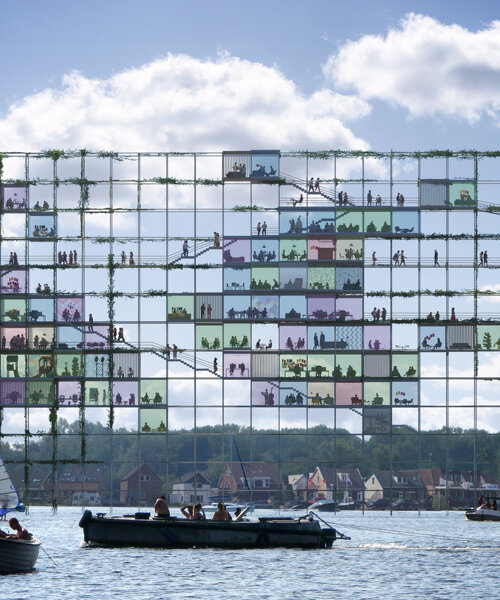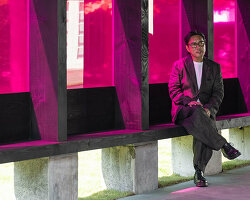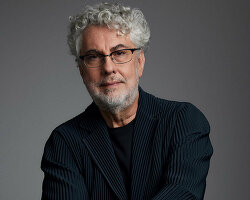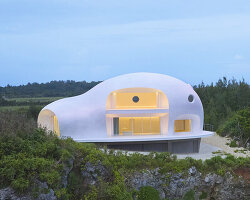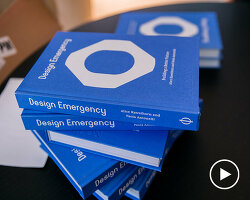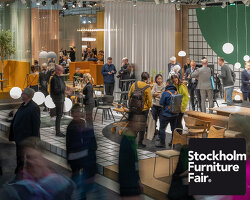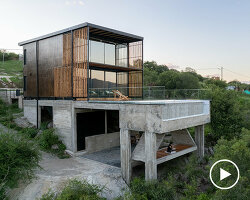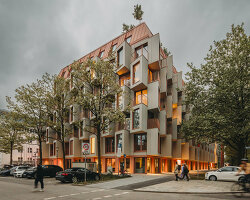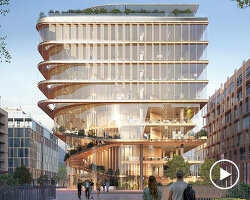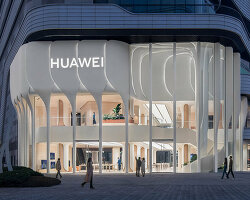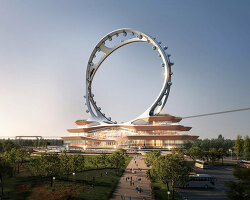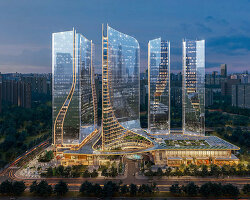following a tumultuous year, designboom interviews UNStudio‘s ben van berkel as he continues to reconsider the role of the architect within contemporary society. at the beginning of 2020, designboom sat down with van berkel to discuss issues relating to the digital revolution and the latest technological innovations within the built environment. at the time, the architect discussed his team’s approach to improving certain qualities within european cities including issues of density and widespread housing crises. some design solutions involved a focus on social cohesion and healthier environmental conditions within public spaces.
one year later, ben van berkel of UNStudio revisits this conversation in an interview to reflect on the events of the past year and the impact of the pandemic on the urban context.
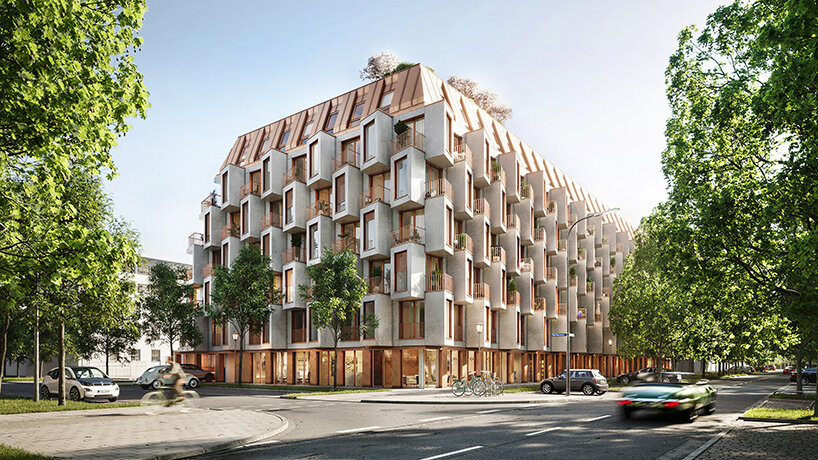
van B residences | image © bloomimages
designboom (DB): working alongside city councils to address failures of urban planning, has your team been approached with any unique or unexpected issues as a result of the pandemic?
ben van berkel (BVB): we have not yet been approached as a direct result of the pandemic, but the events of this past year have certainly highlighted previous planning failures and how urgent it is that we solve the fallout from those. these particularly relate to the current shortage of affordable housing in many european cities and how and where we can actually build new homes.
BVB: in light of this, we recently carried out an urban study for the bna (the royal institute of dutch architects), to investigate new typologies for the development of the outskirts of amsterdam. it is part of an initiative of the city of amsterdam to assure that the city remains resilient and that, while developing these fringes, we can also assure the preservation of the surrounding landscape. the study looks at how we can use the qualities of the landscape to strengthen the urban fringes in spatial and social terms, and whether the outskirts of the city can become more of a gradient between the city and the countryside.
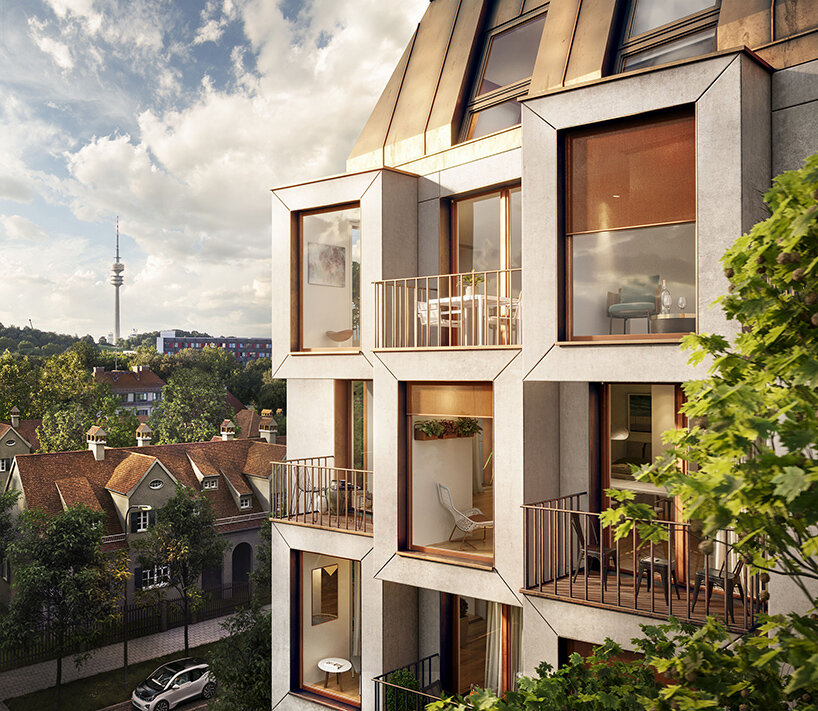
van B residences | image © bloomimages
BVB (continued): but, in terms of current plans to build large numbers of new homes in a short period of time, the pandemic has also highlighted questions concerning the quality of these homes and the nature of adequate neighbourhood development. this is also something we are very involved with researching at the moment.
BVB: also, as a result of my work as a member of the taskforce team / advisory board construction industry for the dutch ministry of economic affairs, we are currently publishing a book that proposes the adoption of an integral approach to spatial development and to solving the problems that arise from the various claims that are currently made on our urban space. such an integral approach requires that all stakeholders – government, policy makers, planners, investors, developers, architects, engineers, contractors and residents – play their part in devising integrated scenarios and strategies where planning and building seamlessly coincide with political, social and economic ambitions.
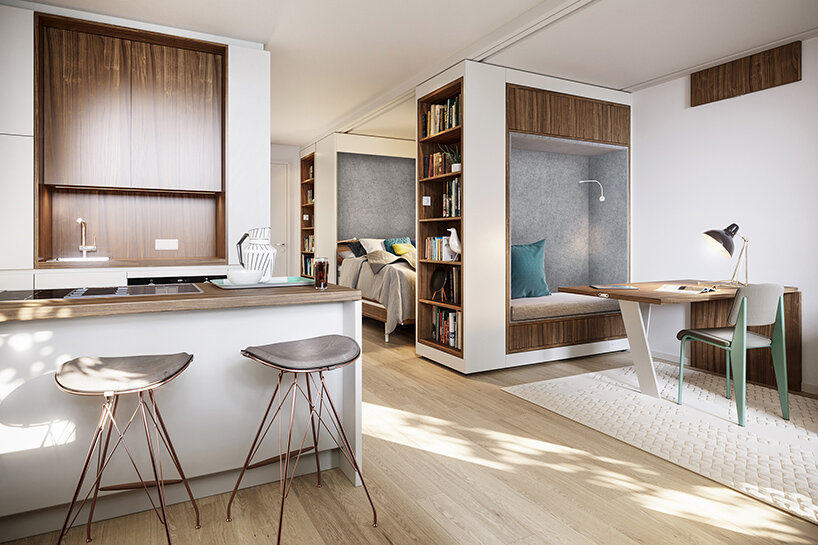
van B residences | image © bloomimages
DB: have your thoughts on the housing crises across european cities evolved since this time last year? how are these housing crises unique to different cities?
BVB: yes. actually my thoughts — and my concern — have evolved quite substantially. over the past year, the pandemic has really highlighted the importance of cities being able to provide quality housing for people of all incomes; for essential workers, young professionals, students etc., and the fact that many of these people have been priced out of the market in many cities – largely as a result of gentrification, buying-to-let and excessive tourism. in some european cities, rents have doubled over the last ten to twelve years, and this just isn’t sustainable. thankfully, many cities recognise this and are securing investment and making pledges to provide large numbers of new homes in the upcoming years. but this raises all kinds of other questions, such as how to build so quickly, and where?
BVB: although, in european cities at least, these housing crises largely share the same root causes, there are differences in their individual situations and their approaches to solving the problems. berlin is a particular case in point. remarkably only 18% of the population of berlin chooses to own their own home, the rest rent. this means that exorbitant rent increases drastically affect 82% of the city’s population and prohibit many of them from actually continuing to live there.
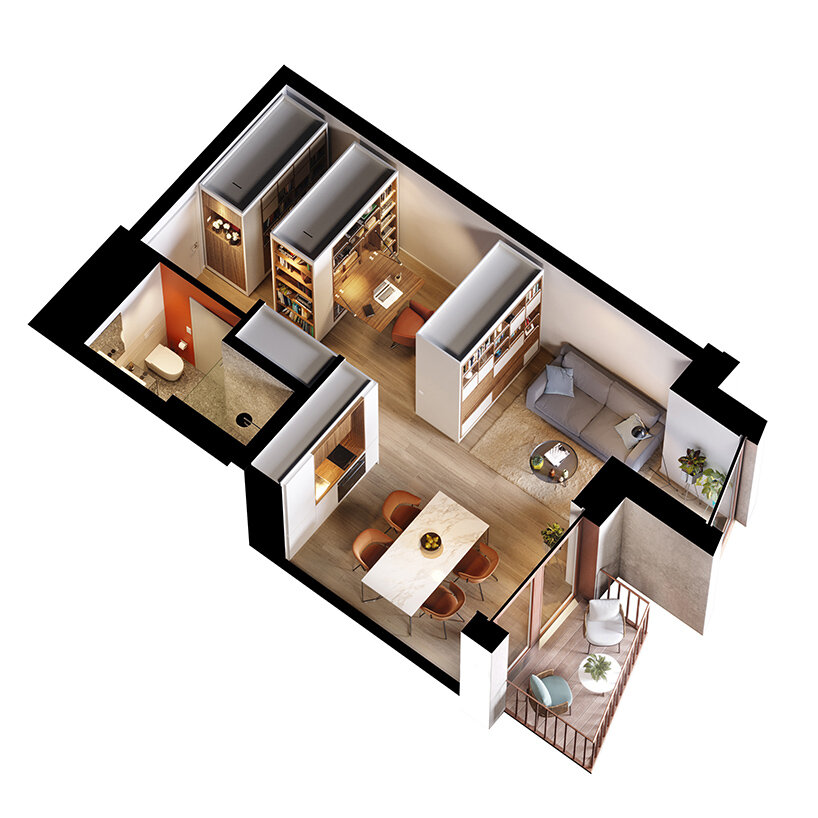
van B residences | image © bloomimages
DB: you are publishing a book addressing the issue of density in the urban context. us cities have surely seen fluctuations in density — here in new york, about 3.57 million people have left the city. meanwhile around 3.5 million people have moved in — what are your thoughts on this trend? are european cities typically experiencing the same?
BVB: I would say so, yes. on the one hand, some people are being priced out of the market and leaving cities, but on the other hand, people who can afford it, are moving in. and this is part of the problem. cities simply cannot function to their full potential without accommodating people of all incomes. we can’t expect teachers, healthcare workers, retailers, firefighters etc. to live outside the cities they work in. people need to live where they work and where public transport is provided.
BVB: the netherlands is also an example of this urban migration. while many people are being priced out of the ‘big 5’ cities in the west, there is also an exodus of people from cities in the east who are moving to these western cities. in amsterdam, for instance, the municipality currently estimates an expected 11,000 new residents every year.
the pandemic also played a large role in the recent numbers of people decamping to the countryside and satellite towns, but this was largely due to enforced home working, which made that possible. once this situation eases up and people return to the workplace, i am quite sure they will need and want to return.
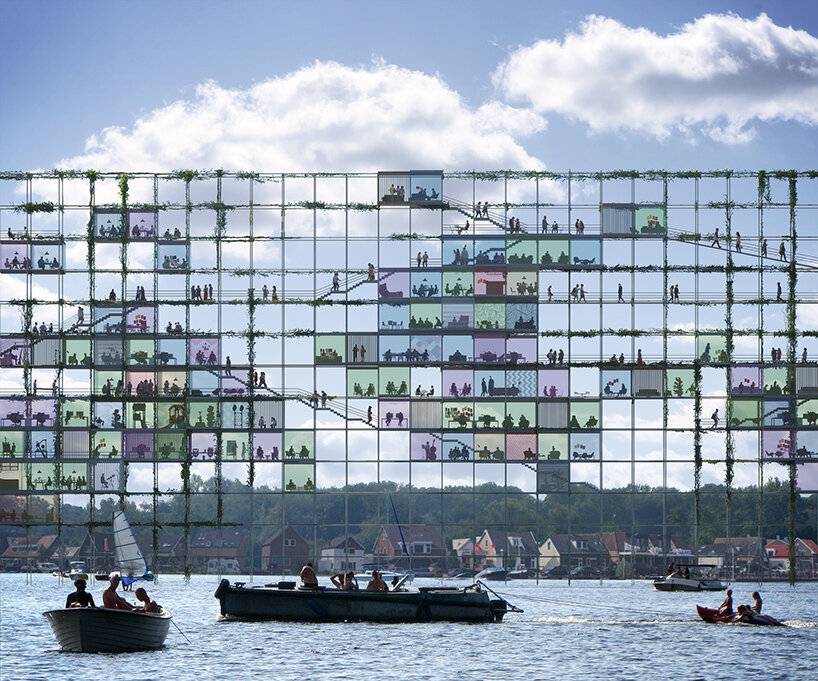
city outskirts study, amsterdam lattice | image © plomp
ben van berkel interview
DB: last year you mentioned that housing developments of the last century caused many people to feel extremely isolated. in response, your team has celebrated strategies of social cohesion. do you predict that social distancing measures will continue to affect shared communal spaces in cities going forward?
BVB: actually, I think the opposite will be the case. the pandemic and enforced distancing has in fact highlighted our innate need for human contact and our drive to care for each other. cities have often been criticized for a lack of neighbourliness, but I have heard so many stories over the past year of neighbours helping each other, with the result that they get to know each other better and create a sort of bond that makes them feel safe and less isolated. one of the architects at UNStudio, who didn’t know his neighbours previously, now regularly goes for walks with them in his lunch break. so I actually believe that once this crisis has passed, we will celebrate and value community more than ever. we may at first be wary of physical contact, and who knows, maybe hand shaking (which we actually do with friends here in the netherlands) will be relegated to formal introductions only. but on the whole, I think a renewed value for connection is one of the most positive things to have come out of this whole experience.
DB: do you think the events of the past year have affected the number of people starting up their own businesses?
BVB: yes, but that depends on the sector. people in the retail and food & beverage industries have been badly affected, so there will certainly be a wariness there. but new digital-based business models are cropping up everywhere, along with new services that are needed to support them.
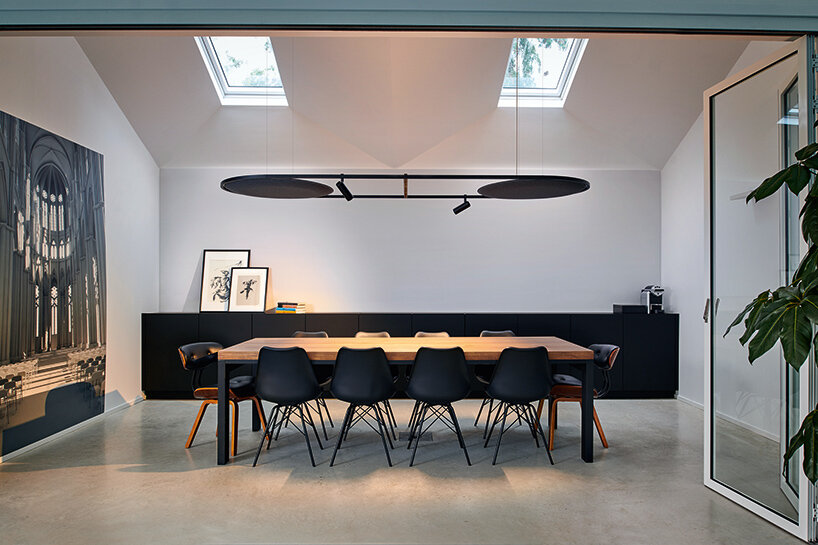
soliscape, © UNStudio and deltalight
ben van berkel interview
DB: currently you have ongoing projects in germany, australia, and hong kong — what is the experience of working internationally throughout this past year?
BVB: that has certainly been interesting! I unfortunately couldn’t travel to visit clients or project sites, so most communication has had to be done digitally. but this has also meant that my time has become incredibly compact. I was able to fit so many more meetings into a day, with people in all different parts of the world. this is certainly an advantage to time spent travelling in many ways, but in others, it’s not ideal, because it’s really is important to meet with clients in person. in fact, in some parts of the world, it’s absolutely imperative.
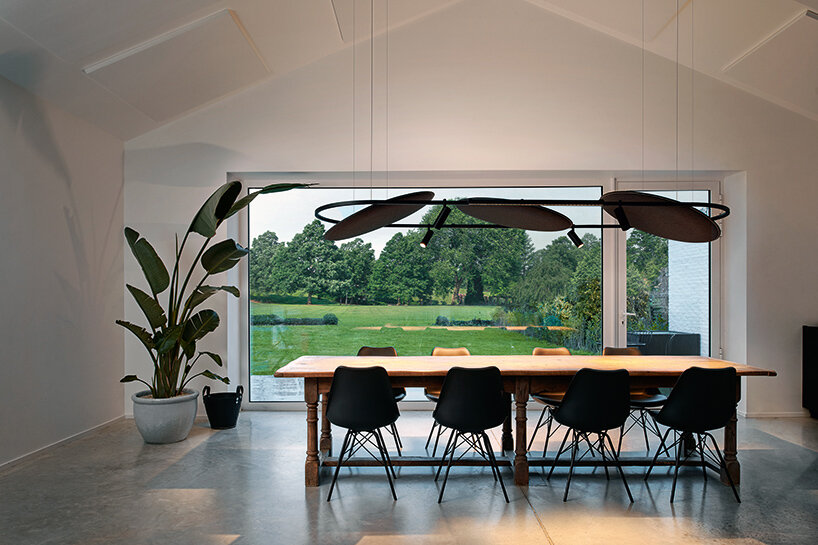
soliscape, © UNStudio and deltalight
ben van berkel interview
DB: last year you mentioned strategies of integrating better systems of air circulation to reduce the spread of germs. do you think there will be a drive for more research throughout the industry to design such healthier shared spaces?
BVB: yes certainly, but not just in terms of air quality and ventilation. i believe there will be a renewed focus on many aspects of indoor health, such as the materials we use for construction and fit out (these will increasingly be more bio-based), in addition to ensuring good lighting conditions. on the one hand this will all be coupled with environmental concerns, and on the other, we will see an increase in the use of new digital technologies to improve our analogue spaces.
BVB: we have in fact recently launched a new flexible lighting system (‘soliscape’) that enables you to combine user focused lighting with acoustic panels for localized noise reduction. bad lighting is associated with a range of unhealthy effects, both physical and mental, such as eye strain, headaches, fatigue, stress and anxiety. with soliscape we try to counteract this, as the system uses sensors to determine the optimum conditions for the wellbeing of people using a particular space and then adjusts itself to suit. so it’s activity and behaviour-based. i expect we will be seeing many more digitally enhanced health-focused products like this as a result of the pandemic.
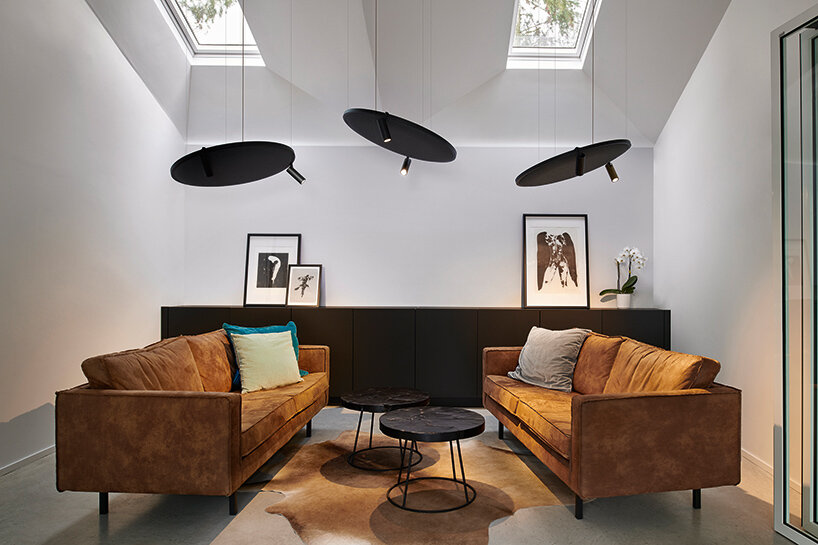
soliscape, © UNStudio and deltalight
ben van berkel interview
DB: along the same line of thought, do you predict that the ongoing pandemic will have any permanent effects on cities or on the profession? or do you think that most of these changes are temporary?
BVB: I believe that some changes are temporary and some will certainly alter different aspects of how we live, and therefore, how we design in the future. for instance, we have all been reminded of how important outdoor and green spaces are to our well being. and returning to my points above about densification and housing shortages, this means that we have to come up with integral solutions that provide the right balance of spaces and services that are needed in cities. this is an extremely complex task that requires dedicated action from multiple stakeholders acting together. and as one of these stakeholders, architects, alongside urban designers, need to come up with progressive and relevant solutions. we have a lot to do…
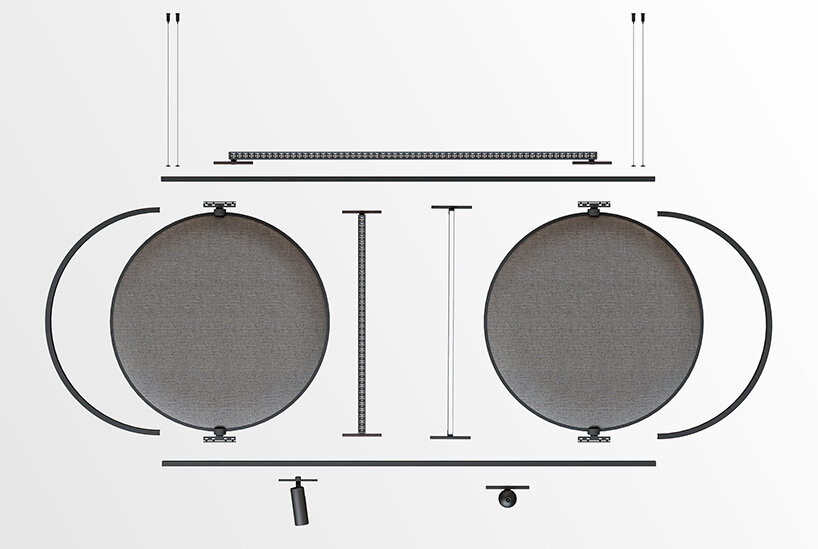
soliscape, © UNStudio and deltalight
ben van berkel interview
architecture interviews (267)
coronavirus (COVID-19) (318)
UNStudio (119)
PRODUCT LIBRARY
a diverse digital database that acts as a valuable guide in gaining insight and information about a product directly from the manufacturer, and serves as a rich reference point in developing a project or scheme.
